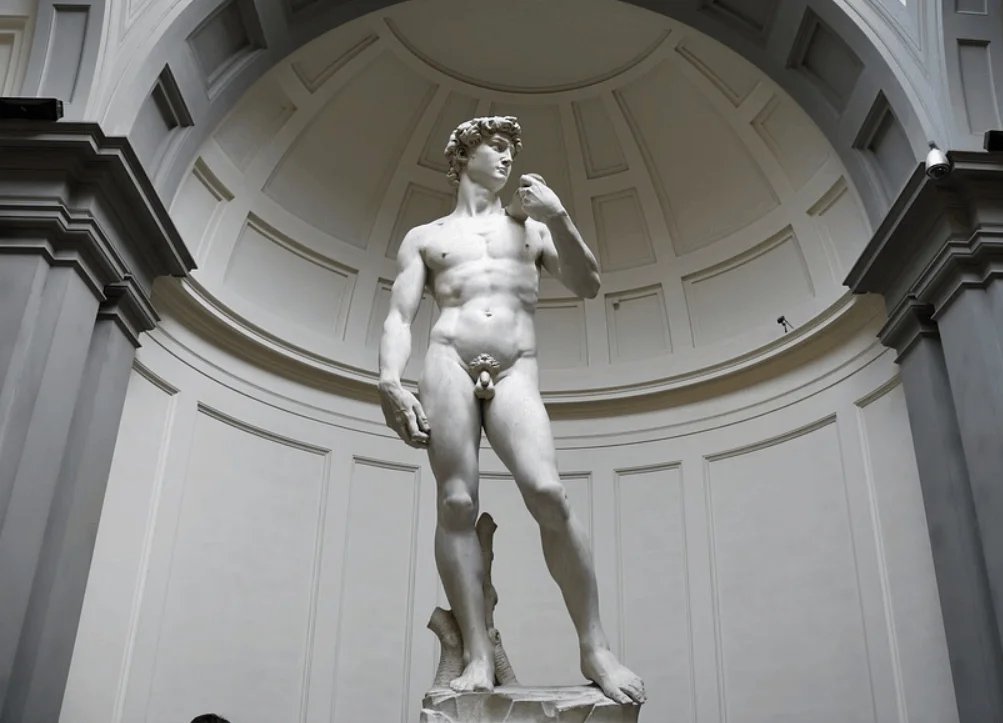Michelangelo di Lodovico Buonarroti Simoni, better known as Michelangelo, has left a legacy of incredible art that has fascinated us for centuries.
Michelangelo (1475-1564), the famous Italian artist, was born in a period referred to as the High Renaissance and lived in the same period as other notable artists such as Leonardo da Vinci and Raphael.
Even though Michelangelo is most famously known as a sculptor, he was also a prolific painter and architect in the Republic of Florence.
It was a period that produced some of the finest art of all time, and in this post, we have created a top 17 list of famous works by Michelangelo.
17. The Entombment
- Date created: 1500
- Dimensions: 161.7 × 149.9 centimeters (63.7 × 59 inches)
- Location: National Gallery, London, United Kingdom
The Entombment is the title of an unfinished painting by Michelangelo and only one of only a handful of panel paintings that he ever worked on. It depicts the dead body of Jesus Christ being carried up a flight of stairs toward the sepulcher, the tomb carved in the rocks that served as his final resting place.
It’s likely that Michelangelo earned this commission to decorate a funerary chapel at the church of Sant’Agostino in Rome. He abandoned this project before it was completed. After all, he is best known as a sculptor and not a painter (although this list features several monumental frescoes).

16. Rondanini Pietà
- Type of work: Marble sculpture
- Date created: 1552-1564
- Location: Sforza Castle, Milan, Italy
Michelangelo was one of the most famous sculptors to have ever lived, and this was truly his main passion. Even though he painted, designed buildings, and wrote poetry as well, he sculpted all his life.
And this can be taken literally, as is proven by one of his sculptures, the Rondanini Pietà. This unfinished sculpture was his final work, and he worked on it until the week that he passed away at age 88.
The name is derived from the Rondanini Palace in Rome as it stood in its courtyard for centuries. It depicts the Virgin Mary who holds the body of her dead son, Jesus Christ, a common theme. The sculpture stands 195 centimeters (77 inches) tall.

15. The Torment of Saint Anthony
- Type of work: Oil and tempera on panel painting
- Date created: 1487-1488
- Location: Kimbell Art Museum, Fort Worth, Texas, United States

The Torment of Saint Anthony is one of the only 4 surviving panel paintings ever produced by Michelangelo, and the earliest known work by the artist as well.
The painting depicts a popular legend derived from the Golden Legend, a medieval collection of over 1,000 manuscripts. It shows Saint Anthony (251-356 A.D.) being attacked by demons in the desert but resisting their assault.
The work was copied from a popular engraving and completed at a time that the artist was only 12 to 13 years old, right at the start of his apprenticeship in Florence.

14. Madonna of the Steps
- Type of work: Relief sculpture
- Date created: 1490–1492
- Location: Casa Buonarroti, Florence, Italy
While the Rondanini Pietà was the final sculpture Michelangelo ever worked on, the Madonna of the Steps was one of the first he ever created. When he started working on it in 1490 he was only 15 years old!
It depicts the Virgin Mary with her child while sitting on a large square stone. The steps are visible on the left side of the sculpture, giving it its name. The relief is rather small with dimensions of 56.7 × 40.1 centimeters (22.3 × 15.8 inches).

13. Battle of the Centaurs
- Type of work: Relief sculpture
- Date created: 1491-1492
- Location: Casa Buonarroti, Florence, Italy
The Battle of the Centaurs is another one of the first works of Michelangelo, who created both this and the Madonna on the Steps while he was under the patronage of Lorenzo de’ Medici, the de facto ruler of the Republic of Florence at the time.
The relief depicts the mythic battle between the Lapiths and the Centaurs, which was a popular subject of art in ancient Greece. The work remained unfinished, even though Michelangelo himself believed it was one of the best of his early works. It has dimensions of 84.5 × 90.5 centimeters (33.3 × 35.6 inches).
The Battle of the Centaurs is a significant work in his career, because, at the young age of just 17, he already departed from the discrete, traditional style that was common at the time, and used dynamic figures. This style would define his future works.
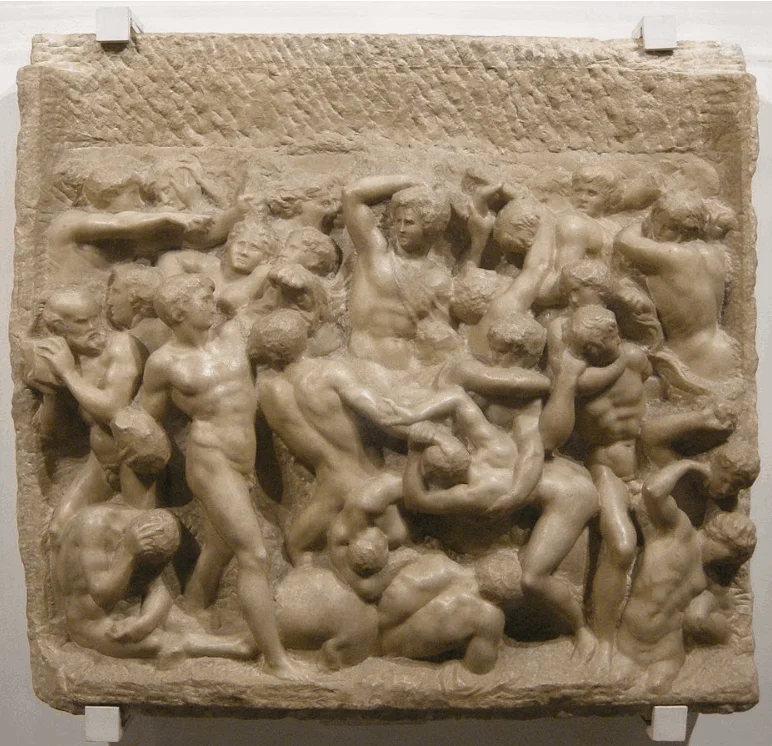
12. Crucifix
- Type of work: Wooden figure
- Date created: 1492
- Location: Santa Maria del Santo Spirito di Firenze, Florence, Italy
The Crucifix is a wooden figure depicting Jesus Christ hanging on the cross naked. There are two similar such pieces of art, and at least one of them has been attributed to Michelangelo. The polychrome wooden figure has dimensions of 142 × 35 centimeters (55.9 in × 13.8 inches).
Michelangelo made this work when he was still in his teens, during the period he was a guest at the convent of Santa Maria del Santo Spirito. This was shortly after his guardian, Lorenzo de’ Medici, had passed away.
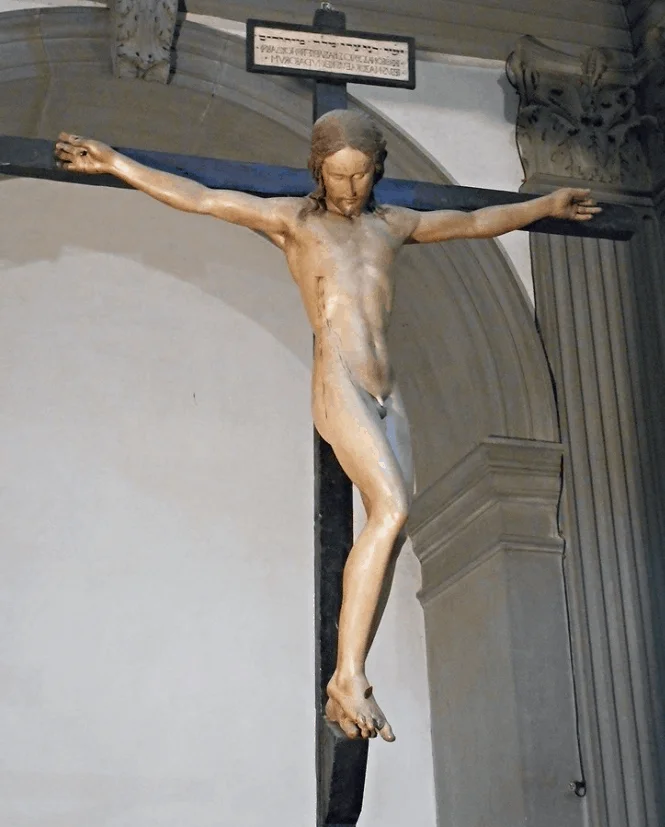
11. Angel
- Type of work: Marble sculpture
- Date created: 1494-1495
- Location: Basilica of San Domenico, Bologna, Italy
Angel is another marble sculpture created by Michelangelo in his earlier years and it’s part of the “Arca di San Domenico.” This shrine contains the remains of Saint Dominic and is decorated with multiple sculptures and reliefs created by various artists for 500 years.
Apart from the angel who holds a candle and is sitting at the bottom right, he also created two other statues. One is of San Petronio, the patron saint of Bologna, and San Procolo, which closely resembles the Statue of David.
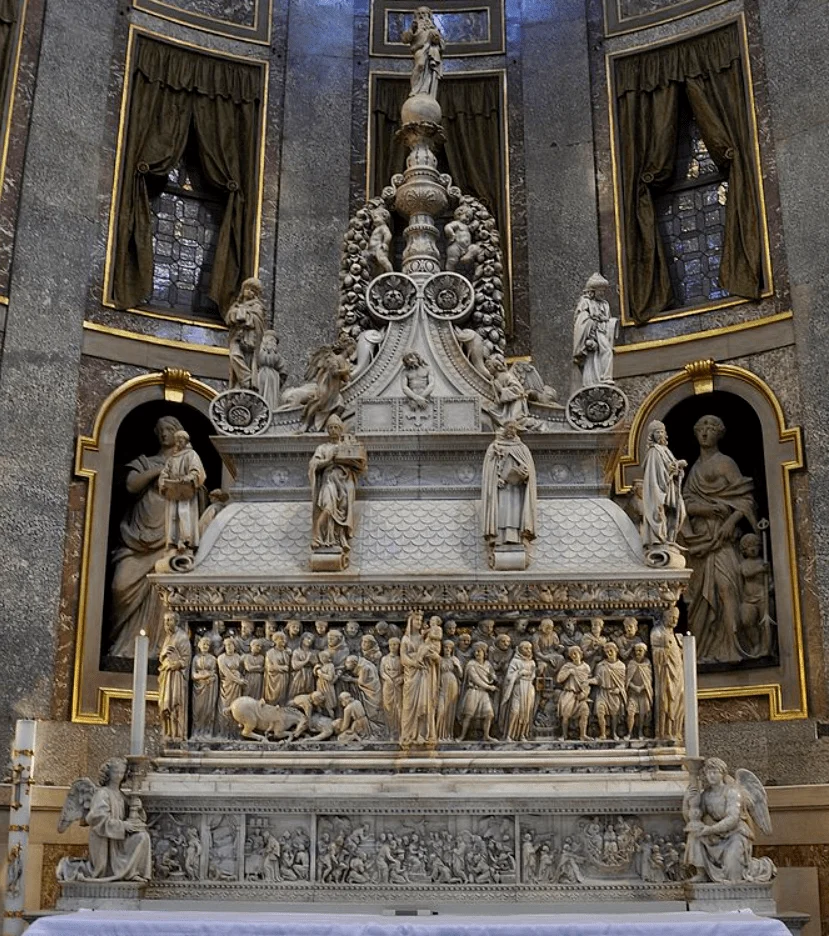
10. Doni Tondo
- Type of work: Oil and tempera painting on a panel
- Date created: 1507
- Location: Uffizi Gallery, Florence, Italy
Doni Tondo is a painting created by Michelangelo when he was about 32 years old. It’s unique in that sense that it’s the only of his kind, a finished panel painting, of the mature Michelangelo to survive.
The painting was commissioned by Agnolo Doni to commemorate his marriage to Maddalena Strozzi, a woman born in a powerful Tuscan family.
The painting is still in its original frame and translates to “The Round Doni,” because of its round shape. It has a diameter of 120 centimeters and depicts the Virgin Mary with her child Jesus Christ, John the Baptist, and five nude males in the background.
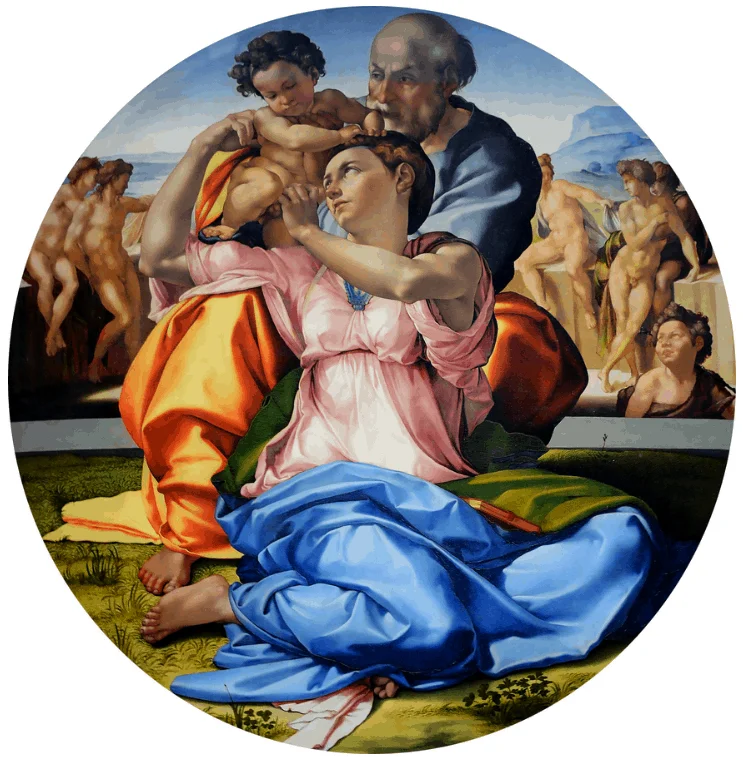
9. Bacchus
- Type of work: Marble sculpture
- Date created: 1496-1497
- Location: Museo Nazionale del Bargello, Florence, Italy
Bacchus is a marble statue that depicts Bacchus, the Roman god of wine in a position that suggests that he’s drunk. It was commissioned by Raffaele Riario, a cardinal and the man who invited Michelangelo to Rome. He ended up rejecting the work upon completion.
Behind Bacchus, there’s also a faun who appears to be eating the grapes that Bacchus is holding. The statue is over life-size and stands 203 centimeters (80 inches) tall. It is one of just two of Michelangelo’s statues created in his first period in Rome that survived.
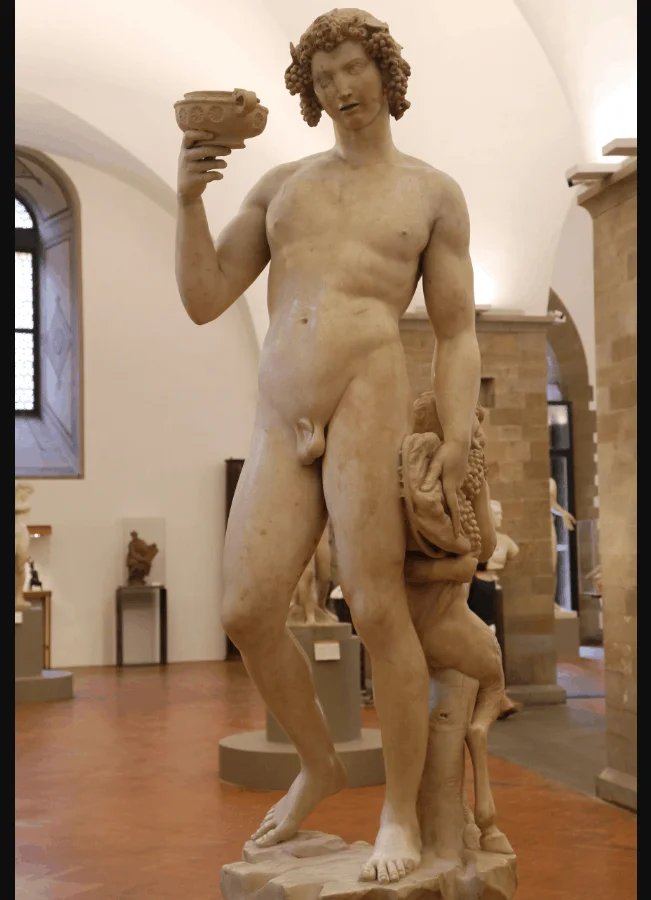
8. Madonna of Bruges
- Type of work: Marble sculpture
- Date created: 1501-1504
- Location: Church of our Lady, Bruges, Belgium
The Madonna of Bruges is a marble statue that depicts the Virgin Mary with her child, the infant Jesus Christ. It’s a very significant work because it portrays mother and child in a completely different way than what was common at the time.
Jesus appears to stand upright and is only slightly supported by Mary’s left hand. he also appears to be moving away from Mary, totally in contrast with the loving embrace of earlier works depicting the same subjects.
The statue stands 200 centimeters (79 inches) tall and it was also sculpted in the typical High Renaissance pyramid style. It was the only sculpture to leave Italy during Michelangelo’s lifetime.
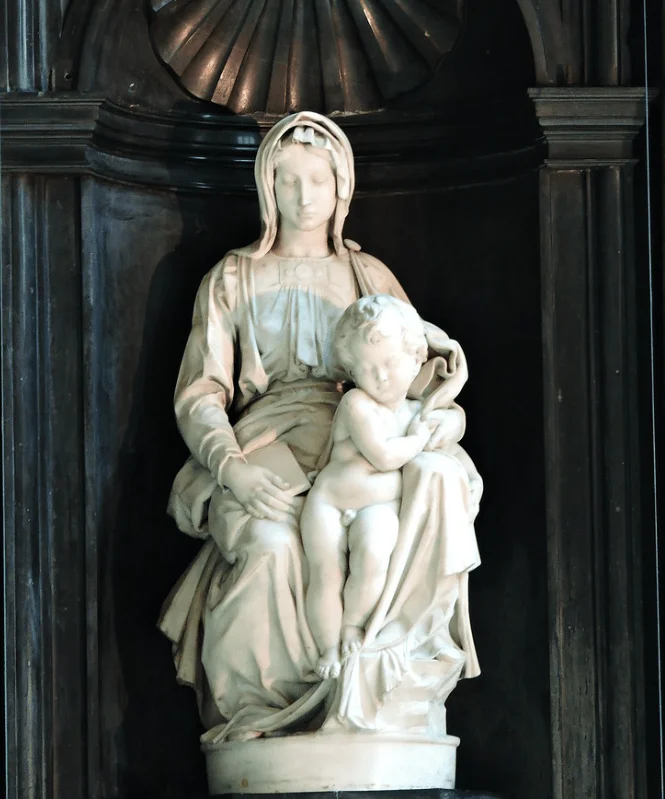
7. Moses
- Type of work: Marble sculpture
- Date created: 1513-1515
- Location: San Pietro in Vincoli, Rome, Italy
Moses is a marble sculpture that was commissioned by Pope Julius II for his tomb. The original commission consisted of over 40 statues but was seriously reduced. It was commissioned in 1505 but only finished in 1545. Pope Julius II died in 1513.
In Michelangelo’s original design, the statue of Moses was to be put on a pedestal about 3.74 meters high (12 ft 3 inches) and facing a statue of Saint Paul. The statue was eventually put in the center of the first tier.
The statue of Moses has dimensions of 235 × 210 centimeters (92.5 x 82,6 inches) and depicts Moses with horns on his head as mentioned in chapter 34 of Exodus in the Vulgate.
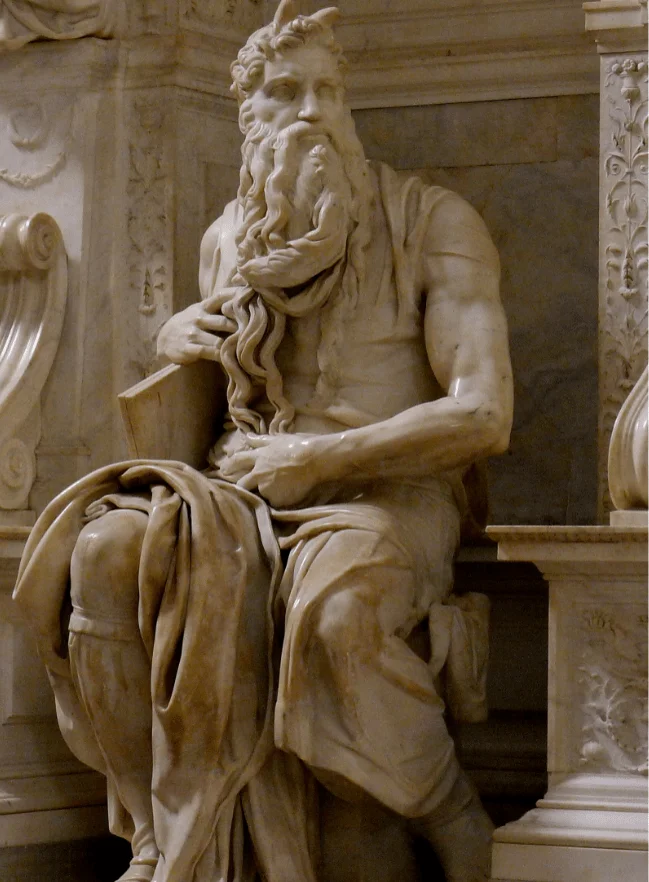
6. Piazza del Campidoglio
- Type of work: Architectural design
- Date created: 1536-1546
- Location: Capitoline Hill, Rome, Italy
Michelangelo wasn’t just a sculptor and a painter, but also a successful architect. At the height of his career in the 1530s, he created the design of the Piazza del Campidoglio, a magnificent square, and the surrounding palaces.
The project was commissioned by Pope Paul III who wanted to make a good impression on Charles V, who planned to visit Rome in 1538. The Piazza was meant to become the main city square and reestablish the grandeur of Rome.
Michelangelo made the design so the Piazza del Campidoglio, which is located on top of the Capitoline Hill in the center of Rome, faces away from the Ancient Roman main city square, the Roman Forum.
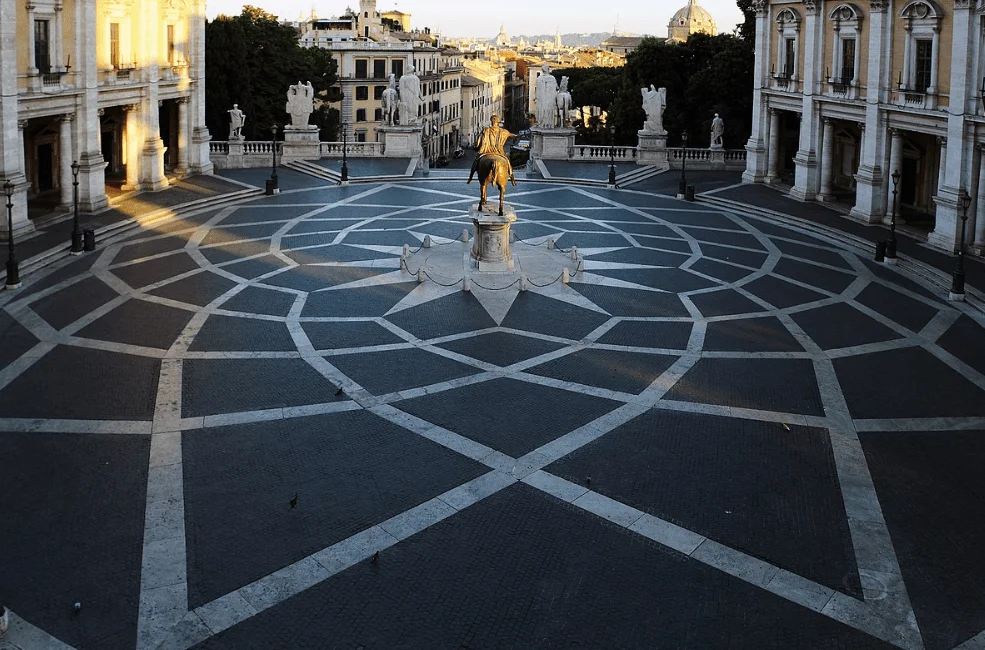
5. The Last Judgement
- Type of work: Fresco
- Date created: 1536–1541
- Location: Sistine Chapel, Vatican City
The Last Judgement is a huge fresco that covers the entire altar wall of the Sistine Chapel, located in the Vatican Museums. It depicts various scenes related to the final and eternal judgment of God over humanity.
It’s a huge painting and dimensions of 13.7 × 12 meters (44.94 x 39.37 feet), which explains why it took over 4 years to complete. He started working on it exactly 25 years after completing the immense Sistine Chapel ceiling.
Even though The Last Judgement is considered to be one of Michelangelo’s absolute masterpieces, it also received criticism. The two main objections were the overall composition and the large number of muscular and nude bodies that the work contains. That’s why all genitals have been painted over by painter Daniele da Volterra.

4. The Pietà
- Type of work: Marble sculpture
- Date created: 1498-1499
- Location: St. Peter’s Basilica, Vatican City
The Pietà translates to “The Pity” and depicts Mother Mary with her dead son Jesus Christ after his crucifixion. The theme of Mother Mary showing compassion for her dead son is one used multiple times by Michelangelo.
The sculpture was created in Carrara marble and commissioned by a French representative in Rome, Cardinal Jean de Bilhères. It has been located in St. Peter’s Basilica since the 18th century.
The sculpture has dimensions of 174 × 195 centimeters (68.5 × 76.8 inches), and Michelangelo’s representation of this theme was unprecedented in sculpture, making it one of his most significant works.
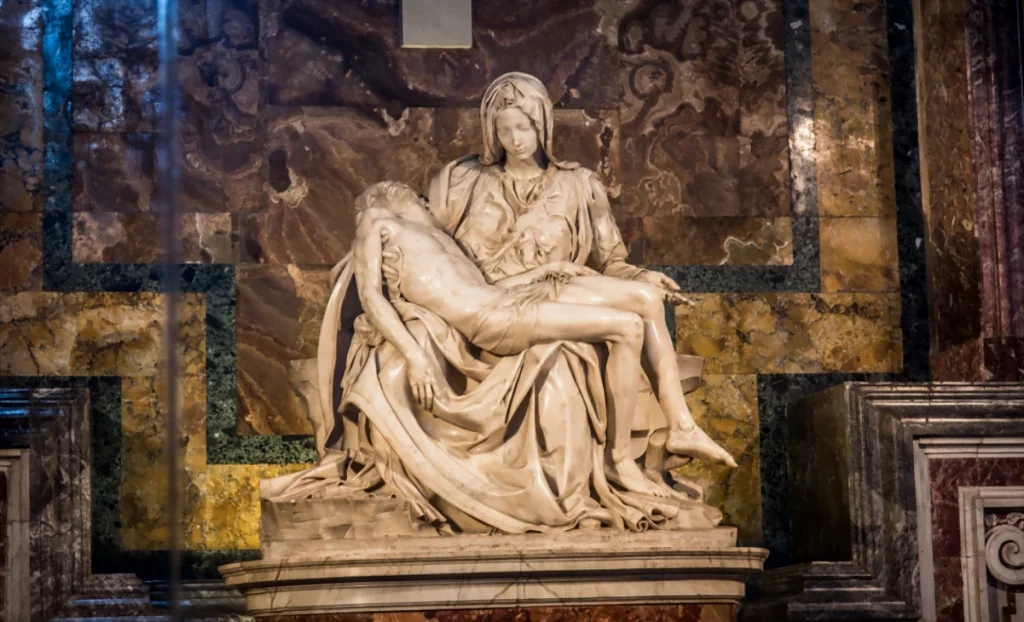
3. The Creation of Adam
- Type of work: Fresco
- Date created: 1512
- Location: Sistine Chapel, Vatican City
The Creation of Adam is part of the much larger fresco which covers the entire ceiling of the Sistine Chapel in Vatican City. It depicts God who gives life to the first man, Adam, as described in the Book of Genesis.
The painting has dimensions of 280 × 570 centimeters (9 feet 2 inches × 18 feet 8 inches). The near-touching fingers of God and Adam have become a symbol of humanity and The Creation of Adam is one of the most replicated religious paintings of all time.
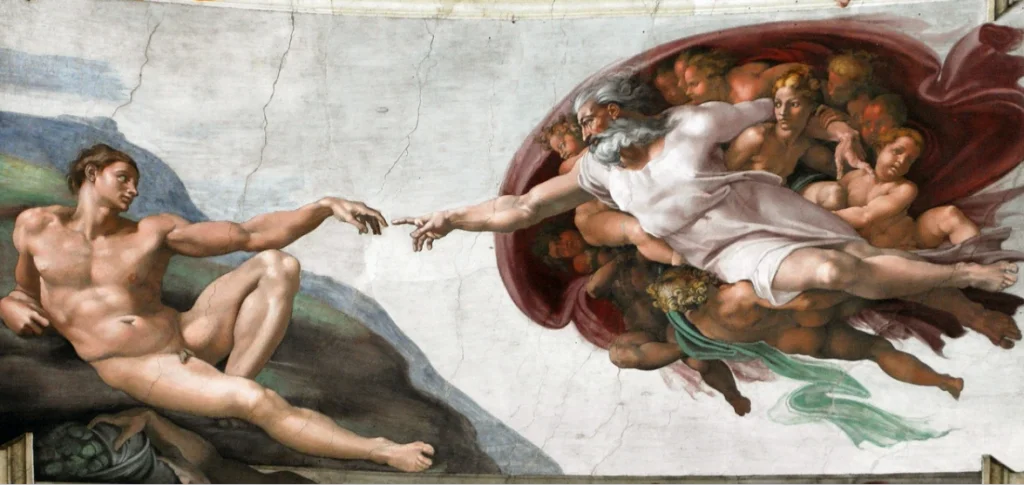
2. St. Peter’s Basilica
- Type of work: Architectural design
- Date created: 1547
- Location: St. Peter’s Basilica, Vatican City
St. Peter’s Basilica isn’t just the largest church in the world, it’s also considered to be one of the holiest places in the Christian World. Construction started in 1506 and wasn’t completed until 1626.
Most of the original design was created by Donato Bramante (and followed by multiple other architects, including Raphael)) in the early 16th century. It was intended to rebuild the old St. Peter’s basilica which stood in its place since the 4th Century, which was in the time of the Roman emperor Constantine the Great.
Michelangelo was appointed the main architect in the year 1547 and incorporated the ideas of Bramante into his design. Large parts of the Basilica as it stands today can be attributed to Michelangelo’s work, which ensured the church would eventually be completed.
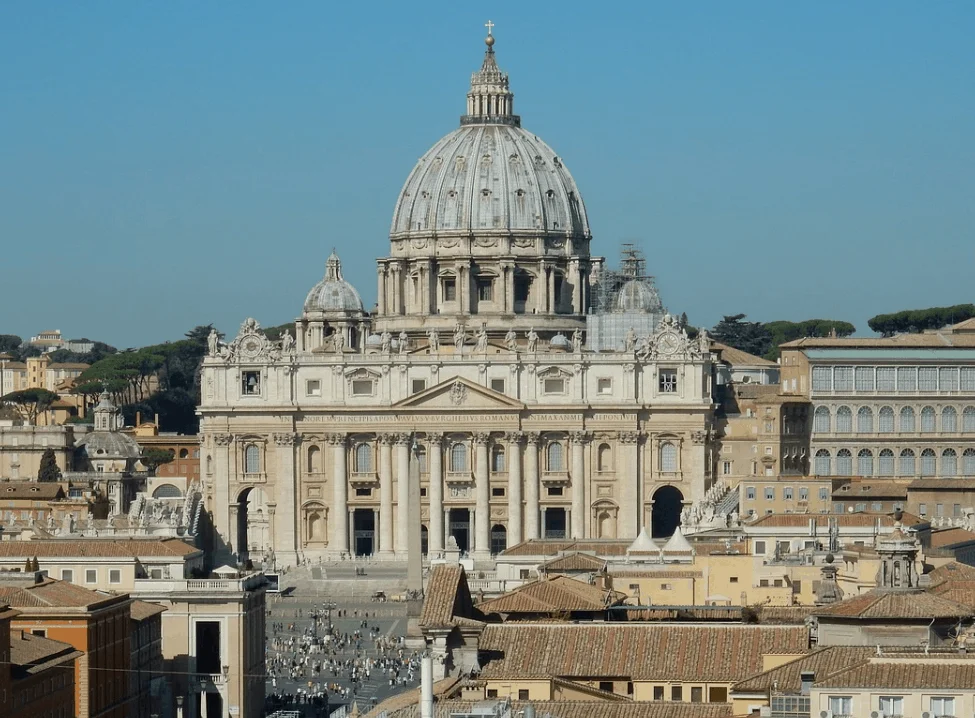
1. Statue of David
- Type of work: Marble sculpture
- Date created: 1501-1504
- Location: Galleria dell’Accademia, Florence, Italy
The Statue of David can be considered to be the ultimate masterpiece of Michelangelo’s extensive career. It embodies the Renaissance ideals and is one of the best-recognized sculptures in the world.
The statue depicts David moments before he is about to launch his attack against Goliath. This was in sheer contrast to earlier sculpture which mostly depicts David standing victorious over Goliath’s dead body.
The statue was originally commissioned to decorate the roof of the east end of Florence Cathedral, but was too heavy and ended up being placed just outside the Palazzo Vecchio, Florence’s town hall. It has dimensions of 517 × 199 centimeters (17 × 6.5 feet).
